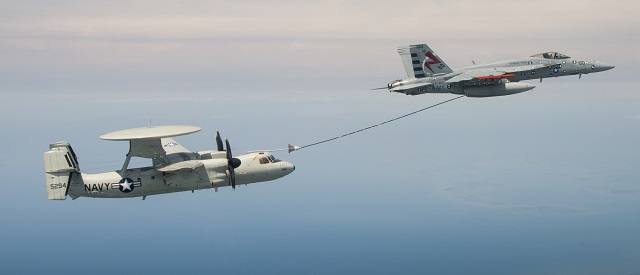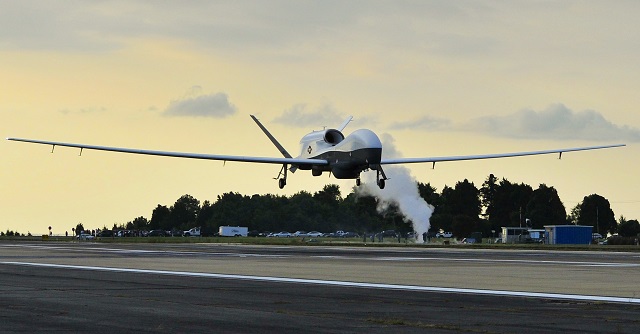The US Navy will extend its air arm in the Asia-Pacific region over the coming five years with the first deployment of the Northrop Grumman MQ-4C Triton unmanned maritime patrol aircraft to Guam in 2017 and an increased presence of other newly developed flying assets like the Boeing P-8A Poseidon and Northrop MQ-8C Fire Scout.
The increased emphasis on the Pacific theatre will also see the latest upgraded Boeing F/A-18 Super Hornets deployed to the region, backed by Northrop E-2D Advanced Hawkeyes for airborne command and control and Boeing EA-18G Growlers for standoff electronic attack.
This is according to chief of naval operations Adm Jonathan Greenert’s latest “navigation plan”, which was unveiled 20 July.
The five-page, five-year strategy document comes amid renewed concern by the Pentagon about the potential threat China poses to US interests in the region. It also arrives as Congress finalises its annual defence spending bill, which is likely to spend more money on the military than planned by circumnavigating unpopular automatic spending limits known as sequestration.
According to the navigation plan, the navy aims to replace its aging E-2C Hawkeye with the new and improved D-model at four carrier air wings by 2020, which is around the same time it hopes to retrofit an aerial refuelling capability.

A Northrop Grumman E-2C test aircraft conducts an aerial refueling dry-plug test with a Boeing F/A-18.
Northrop Grumman
The plan also reaffirms the navy’s commitment to the carrier variant of the Lockheed Martin F-35 Joint Strike Fighter for initial operational capability (IOC) in 2018, even though the branch stretched out its planned F-35 buy in its latest budget submission in favour of other items.
“With advanced sensors, data sharing capability, and the ability to operate closer to some threats, it will enhance the air wing’s ability to find targets and coordinate attacks,” the document says of the Lockheed jet.
The maritime service hopes to have 47 armed, submarine-hunting Poseidon aircraft by the end of the decade and complete replacement of the legacy Boeing P-3C Orion by budget year 2019. It will also continue to invest in the software and hardware needed for its maritime patrol aircraft to deploy the air-delivered MK 54 torpedo.
In the electronic warfare arena, the navy hopes to wrap up its transition from the recently-retired Northrop EA-6B Prowler to EA-18G Growler within the next budget year. It also expects to start phasing out the outdated ALQ-99 jamming pod carried by the Prowler and Growler with the Next Generation Jammer Increment I system once it achieved IOC in 2021. The navy will also install about 400 jamming protection kits on its Super Hornets by 2020 to defend against enemy jamming.
The document also notes that the navy expects to have 24 new Bell-Boeing V-22 Osprey tiltrotors serving in the so-called carrier onboard delivery (COD) role within the next five years, for IOC in 2021. It wants a total of 44 Ospreys to replace the C-2 Greyhound transport on its carriers.
“Our mandate is to be where it matters, when it matters, ready to respond to crises and ensure the security that underpins our global economy,” Greenert said in a statement.

A Navy MQ-4C Triton UAV lands at Naval Air Station Patuxent River in Maryland.
US Navy
Source: FlightGlobal.com



















